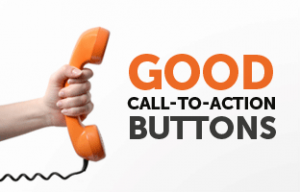20 Aug 5 Elements of a Successful Website
Let’s take a look at the 5 Key Elements of a Successful Website. Are there more? Sure, but let’s just look at these five: technical, content, navigation, integration, and consistency.
Hi there, folks. Paul Barrs signing in for another training quick tutorial video. Let’s have a look at the five key elements of a successful website.
Now, one of the keys is to keep it simple. So we’re only going to look at five. Are there more? Absolutely, but let’s just look at these five: technical, content, navigation, integration, and consistency.
If you can just focus on these five . . . kind of like the old 80/20 rule, where if you put 20% of your effort into these five things, they will produce 80% of the results. Is there more you can do? Oh, boy, yes. Hundreds and hundreds of things, but that’s too many. So let’s just have a quick look at these and see where we can go from here.
Number one, technical. This is important. I’ve got three points for you. Firstly, foremost, before anything else, your website must load fast. Now, the ideal user experience for this is two to three seconds. That’s the goal. Five? Okay, on the outside. Nine? Not so good. Fifteen to 20? Horrible.
So as you go over this, I want you to keep in mind a couple of things. Number one, the testing tool that you are using. Don’t let it be your own computer. Don’t let it be your own mobile phone. Instead, use an external third-party testing tool like GTmetrix.
But bear in mind where the testing point comes from. If you’re using the free service with GTmetrix, I think it comes from Vancouver, Canada. So I use the pro version, which means I can test our Australian websites from here in Australia from Sydney. It does make a big difference. And then look at things like service speed and images and CSS. Wow, technical. The key is it must load fast.
Let’s have a look now. Another key element, Google is now what we call mobile-first. If you’re hooked up with Google Search Console, you’ll notice that it comes up as mobile-first. Google says, “I care more about your mobile website than I do your desktop site.” So build for mobile-first, desktop second.
One other thing you absolutely should do is plug your website into Google Search Console. It’s essential that you get your insights and information from Google.
Now, I’m going to tell you straight up a lot of the stuff that you will see in there is going to be beyond you from a technical point of view, but that’s okay. That’s where you get someone like me or my team involved, or somebody else if need be, but you find someone who understands.
Let’s look now at content. Oh, this is the beautiful one. I love content because it’s all about what do your customers want to know, and then that’s it. Then answer it.
So as you’re planning your content, don’t just look at, “What do I want to tell them?” Look at “What do they want to know?” On a quick side note, if you’re doing SEO, Search Engine Optimization, you should look at what Google thinks they want to know as well and then answer those questions.
As a general rule, customers want to be informed on a product or service before they buy, so don’t just sell. Let’s go back to the 80/20 rule. If we look at it from the point of view of people getting ready to make a buying decision, if they’ve never bought your product or service type before, then they want to be informed about it. They want to ask questions. You should answer them.
But once they move from that 80%, then they move into the final, into that 20%, which then becomes the massive part of the market, the 80%. People know what they want. They’re just trying to decide who to buy it from. That’s part of the sales process. And we call that spot in the middle the ZMOT, the zero moment of truth, when they go from understanding what they want to buy to then trying to decide who they want to buy it from.

So I’m going to make a suggestion here. When it comes to navigation, you use something what I call the one-click philosophy. And I took this many years ago from a Google workshop where they spoke about how they just wanted people to search, type in, find a result, click it once, get the answer they were looking for. So I thought to myself, “Hmm, that’s interesting. Google doesn’t want them to go back to Google to keep searching.”
So we don’t want people to keep searching around our website either. If they find an answer in Google, they click through to our website, they should be no more than one click away from where they want to be. Does that make sense?
Then when they get to that page, then they should be no more than one click away from where we want them to be. That’s the conversion point, the sale, the query, whatever it might be.
So the one-click philosophy is simply this: Wherever somebody lands on your website, they should be no more than one click away from where they want to be. And then when they get there, they are no more than one click away from where we want them to be.
So let’s keep it simple. That’s the rule. No more than three levels deep with your navigation.
Three levels is enough. You don’t want people going down and down and down the rabbit hole. No. Three levels is all you absolutely want.
Another thing that I want you to consider with your navigation is your use of internal links to guide people to your call to action, your one click. It doesn’t have to be in the menu across the top. Don’t think that. It can also be internal link structures from a text, a couple of words, or an image, or a button, something that gets people to your call to action.
So let’s look now at the integrations. These are important because it’s no longer just you. There are so many different ways that people can reach out and you can find out more about what they’re doing. So obviously, it goes without saying, Google. Plug into search console, plug into Analytics, plug into Tag Manager, whatever it is, however you’re set up, plug your website in so you can get the data that you need to do what you need to do.
Look also at your marketing integrations, Facebook, Campaign Monitor, or whatever email program you use. Calendly, CRM, whatever it is that you do, look for what is your intended outcome. Look for then what is your customer’s intended outcome, and ask yourself, “Is there an app? Is there a zap? Is there something that you can do to integrate your marketing with your content with your strategy?”
As we move on now to consistency, this is so important and it blows me away how many people don’t get this simple one right. Look across your website, look at the font family, look at the brand, look at the colors, look at the images, look at the buttons. Are they consistent?
Now, as we’re going through this video presentation, if you’re looking at the actual presentation, the slides, you’ll see the colors that I’m using here. They are part of my brand colors for my website.
I use them because they are simple. I’ve done this presentation in Canva, but I’ve kept the consistency there that if somebody sees this presentation somewhere off my website, when they come back to my website, and of course that is the goal, they’re not going to see something dramatically different. There is consistency in the branding.
Also, in your content, post new content often and regularly. How often? People ask me this all the time, “How often?” I say, “As often as you can.”
Now, I ran a test recently where I posted a new article every single week over a 12-week period on the topic of search engine optimization. And then I compared that to where I do something more like this and I do a longer, more in-depth deep dive, in this case, into areas of web design. And I do these once a month over a three-month period compared to once a week over a 12-week period.
Is there a difference in conversions? Well, for me, actually there is. So I do both, believe it or not, to mix it up. This one is just as much work for me as it is to do a weekly short article.
For you, though, I don’t know. You tell me. Have you tested? Have you had a look to see what the numbers represent? Perhaps you should.

So what is the call to action? What is the ultimate goal on your website? Obviously, for those of us running e-commerce, people buy a product online easy. The conversion point, the call to action, is “Buy Now,” “Click Here,” “Buy This,” “Pay Some Money.”
That’s pretty simple, but what if you’re a service-based business? The lead could be the call to action.
I’ve recently changed to a “request a call back,” because I found that, yes, people might fill in the form and they want me to get in touch, but then they don’t get back to me. I never get to talk to them because we all have our own lives, our lives are filled with clutter, our businesses are busy. So I changed that to “request a call back.” But for you, you need to test and measure to see what will work.
So here’s how we can help. Yes, there are a whole bunch of things on how we can help: website design, search engine optimization, integrated marketing. My team and I, we do all of these things. I’ve been doing it as I record this video now for 21 years. I think I can help. I know I can. I’d love to help.
So there are just a few tips, quick tips to help you get on the right side of things for your marketing.
So, folks, you have a great day, a great week, a great month. And if I can help, if you’re not satisfied with whoever is doing this for you now, please get in touch. Request a call back at paulbarrs.com, and I’ll give you a buzz, and we’ll have a look at what the options are and the opportunities to see how we can help you also.
Thanks very much. Have a wonderful day. Bye-bye.
Transcript Services provided by http://www.speechpad.com




